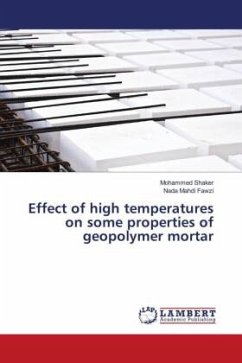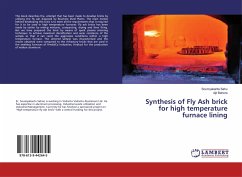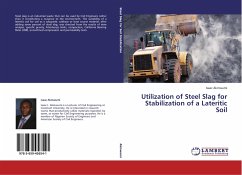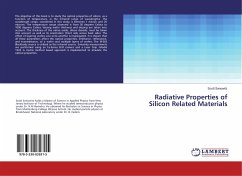
Effect of high temperatures on some properties of geopolymer mortar
Versandkostenfrei!
Versandfertig in 6-10 Tagen
40,99 €
inkl. MwSt.

PAYBACK Punkte
20 °P sammeln!
Large industries are causing environmental pollution and global warming. Thus scientists are focusing on finding ways to utilize industrial waste as a substitute for fundamental resources in order to maintain the natural balance and minimize industrial waste. Cement is the primary source of carbon dioxide emissions and high heat during the production process in the building industry. Because some industrial wastes contain silica and alumina materials, the world has turned to geopolymer mortar, which is made from these wastes (such as fly ash, slag, etc.) and has a low production cost and high ...
Large industries are causing environmental pollution and global warming. Thus scientists are focusing on finding ways to utilize industrial waste as a substitute for fundamental resources in order to maintain the natural balance and minimize industrial waste. Cement is the primary source of carbon dioxide emissions and high heat during the production process in the building industry. Because some industrial wastes contain silica and alumina materials, the world has turned to geopolymer mortar, which is made from these wastes (such as fly ash, slag, etc.) and has a low production cost and high resistance, especially when using micro steel fibers.Geopolymer mortar had to be designed from a variety of experimental combinations employing 1% micro steel fibers and subjected to various temperatures, all of which were based on the prior work of other researchers. In order to test the effect of fibers on the mortar's resistance, the geopolymer mortar was designed with various proportionsof sustainable materials (fly ash and slag). The slag weight percentage was (50 %, 40 %, 30 %) by the weight of fly ash to study its effect on the geopolymer mortar's properties.












